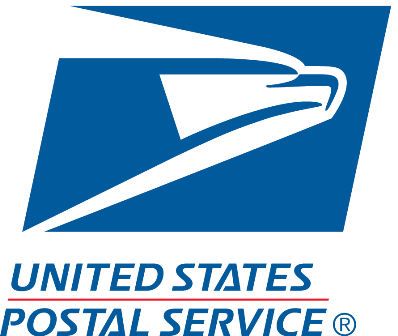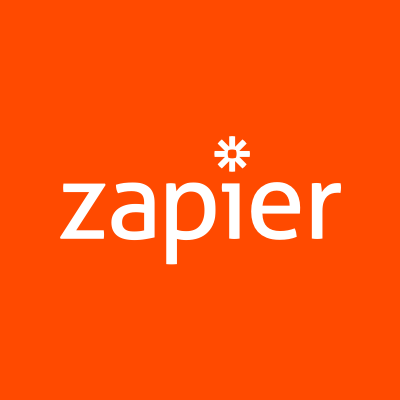How I Created A $60K/Month App That Collects In-Person Payments Through Stripe
Hello! Who are you and what business did you start?
I’m Ryan Scherf, the founder of payment.co (@payment), an app built on top of the Stripe payment gateway for creating card-present charges. Payment is available on iOS and Android, and allows customers who have created online stores to easily collect payments in person, in the same account, with no barriers or card readers required.
The app launched in January 2015, and since has grown to process over $70M in volume annually. The app collects a 1% service fee on every single charge.

What's your backstory and how did you come up with the idea?
I went to school for Computer Science and was gated into being a developer. I mostly hated everything about development environments at the time (Java was the most popular at the time), and thus transitioned into a career of design. After working at several healthcare startups (these are abundant in Minneapolis, due to Unitedhealth Group being headquartered in the area), I quickly realized that working for people wasn’t a long term career path that I was willing to commit to.
In 2013, I was approached by someone I had worked with previously on an invoicing app, and he had an idea for building an analytics app on top of a company in its infancy: Stripe. This was pre-huge valuations and funding rounds.
At the time, I knew nothing about Stripe, nor payment gateways. I had 4 & 2-year-old boys and had just built a new house in the suburbs.
One of my biggest regrets is not focusing on my business earlier. We were making money, and I always treated it as just a hobby business.
Our first app, Paid, launched in late 2013 and was the only analytics app for Stripe revenue. I won’t get into too many specifics about what happened afterward, but I did an interview with Mixergy in 2015 and explained the process.
We were seeing significant traction, but we were unable to come up with a great way to monetize. As a designer and iOS dev combination, our one requirement for building apps is that we didn’t want to manage a backend server. Especially one calculating resource-intensive analytics data.
Therefore, we decided to launch Payment; an app for collecting card-present payments. This was a gaping hole in the Stripe offering and didn’t require much validation because it was so obvious that it was missing. Stripe offered the ability to create direct charges via their API, however, they did not have an app. And due to the simplicity of their API, this feature would have been incredibly easy to include in their Dashboard app, yet they deliberately chose to leave it out.
Take us through the process of designing, prototyping, and manufacturing your first product.
Having worked with my partner on several projects and companies in the past, our working relationship was very natural. I focused on product design, and he focused on development.
The first version of Payment was designed, built and tested over a span of 2 months. Development began in November 2014 and launched in January 2015.
The only thing we needed the MVP to do was to allow for someone to create a charge which enabled us to collect a fee. This simple functionality wasn’t possible via an app (built on Stripe) at this time. No card readers, nothing fancy. Just processing a manual input credit card number, similar to what you’d do in an eCommerce experience.
Describe the process of launching the business.
We didn’t have any special tactics or tricks we used to launch. There wasn’t any hype, and nobody saw us coming. We chose the “build it and they will come” route because the hole was so immense, and the project was so small. We only focused on iOS to begin as the search results when searching for “Stripe” in the App Store had nothing to do with finance. We figured it would be relatively easy to own that keyword, and we did.
From our previous app (Paid), we did have a user list of several thousand account emails that might be interested in charging via an app, so we sent campaigns to them.
In our first 15 days after launch, we made $184 from fees. I can remember how incredibly exciting this was, and how all of a sudden this app idea felt validated. Our previous app (Paid) relied on IAP’s. This app was different. All we needed to do was get more people using.

Because we bootstrapped everything and worked in our spare time, we had no costs, only time. We both had families, stable finances and an interest in working for ourselves. We let the app sit while we worked on some features, but essentially, it was all organic growth for 2015. We ended up making $38,000 that year, split 50/50.

Since launch, what has worked to attract and retain customers?
I’ve found that the best way to keep customers is by building what they want. That sounds cliche, but I’ve been super diligent in figuring out exactly what to build. I don’t keep a product roadmap, nor do I have an aspirational product I want to get to. My customers are people that run real businesses. And they run many types of businesses: from private jets to selling surfboards to donation collection at a church. There is no one size fits all for the product. The only exception to that is they want to be able to accept credit cards, in a variety of ways, very quickly. By focusing on just that user experience, we’ve been able to keep the app small and nimble, and dead simple to get started.
You may be wondering how this is possible? Well, I do all of the customer support. I don’t have a support team, nor do I have automation for answering the requests. I’ve added a few pieces to the app for the very common questions (like Where is my money?!), but other than that, I personally respond to every single support request. This allows me to keep my pulse on what’s working and what isn’t, and get ahead of the features that are being requested often.

In terms of growth, we’ve mostly focused on app stores (Apple and Google Play) to distribute and optimize the app. We’re in the process of launching an initiative to start funneling leads from the web as well but haven’t traditionally focused here.
We position the app strongly as a preferred, verified Stripe Partner. In fact, our partnership with the Stripe team is deep enough that their account managers and support teams will refer their users to our apps to collect payments. Since we were first to the market, we mostly saw the competitors copy our descriptions verbatim. The most important term we can rank for at the moment is “stripe”, so we try to pack that term as much as possible (even though some competitors did it more).

Since our app relies so heavily on Stripe accounts, we essentially buy paid ads for the keyword “stripe” on all of the relevant stores. Interestingly, we also rank #1 organically for the keyword “payment”, which is ahead of some really popular services like Venmo, Google Pay, PayPal, Zelle, etc. Although this gives us some downloads, most abandon as they have no idea what a Stripe account is or why they would need it.

How are you doing today and what does the future look like?
In 2018, my partner and I parted ways as he was looking to focus on other things, and I was looking to go all-in on Payment. The app has been profitable since day 1, so there has never really been cash flow problems. At the time of writing this, the app is processing $6M per month in volume, which equates to $60,000 per month in revenue. Roughly 80% of that is profit after advertising, hosting, card reader inventory and other miscellaneous expenses. Charges are made all over the world.
I’m still the only true employee, though I have several contractors that assist in various capacities, to the tune of about 1 day per week. I still do the design, most of the smaller development, marketing, and business development.
I’ve set a goal to be processing $10M/month in Stripe volume by Spring, which is a pretty big stretch goal. There’s product-market fit, a great organic and retention strategy, so focusing on growth seemed like the proper next step. Roughly speaking, the CMGR equates to 25% YoY growth.

Through starting the business, have you learned anything particularly helpful or advantageous?
One of my biggest regrets is not focusing on my business earlier. We were making money, and I always treated it as just a hobby business. My partner also did the same. Had we taken 6 months and just focused on building it out, we could have drastically accelerated the path to where we are now. In addition, I would have parted ways with my unengaged partner sooner. It wasn’t his fault, we just wanted different things out of the business. When we finally realized it, it was too late.
In addition, I’m not so naive that I don’t realize that there was a serious amount of luck involved with our success. As mentioned previously, Stripe was in its infancy, and we latched on and rode the wave for 5+ years.
What platform/tools do you use for your business?
The tools I check every day ironically have nothing to do with how much money I’m making. They’re all development and customer-focused:
- Firebase: for crashes, analytics, etc.
- Google Analytics: optimizing funnels.
- Zendesk: responding to customer support requests.
- Sentry: backend errors.
- Campaign Monitor: 1st class Journey automation.
- ShipStation: for inventory fulfillment of card readers.
What have been the most influential books, podcasts, or other resources?
I’ve never been a huge fan of the “this is how I did it” books. I don’t think that formula is repeatable for most situations. For instance, the just build it and ship it mentality is something you won’t find in any book -- as it doesn’t discuss testing, finding product-market fit, etc.
I do however believe in the lean startup, and taking that even further, bootstrapping. People like Ruben Gamez and Rob Walling have been friends of mine for years, and they’ve launched several successful bootstrapped startups. Rob’s podcast Startups for the rest of us is especially great.
Advice for other entrepreneurs who want to get started or are just starting out?
I think the best thing anyone can do is to learn how to build it themselves. With the abundance of frameworks, it’s easier than ever to get something scrappy up and running. Don’t wait until you save up $10k to hire an engineer. It will never be enough money if you can’t do some things on your own.
In addition, there isn’t any perfect timing. You don’t need to wait to quit your job, as something else will naturally come up. Jumping in and shipping something is the only way to get yourself motivated to free yourself from the constraints of working for people.
Are you looking to hire for certain positions right now?
I’m in the process of looking for someone to assist with growth. I’ve realized over the last few years that I can’t do everything, even though I want to, so I’ve been trying to identify my weak spots and find consultants for that.
This person would handle iOS and Android store campaigns, SEO, Adwords and any other ways they think they could grow the user base while targeting Stripe users.
Where can we go to learn more?

Download the report and join our email newsletter packed with business ideas and money-making opportunities, backed by real-life case studies.

Download the report and join our email newsletter packed with business ideas and money-making opportunities, backed by real-life case studies.

Download the report and join our email newsletter packed with business ideas and money-making opportunities, backed by real-life case studies.

Download the report and join our email newsletter packed with business ideas and money-making opportunities, backed by real-life case studies.

Download the report and join our email newsletter packed with business ideas and money-making opportunities, backed by real-life case studies.

Download the report and join our email newsletter packed with business ideas and money-making opportunities, backed by real-life case studies.

Download the report and join our email newsletter packed with business ideas and money-making opportunities, backed by real-life case studies.

Download the report and join our email newsletter packed with business ideas and money-making opportunities, backed by real-life case studies.































